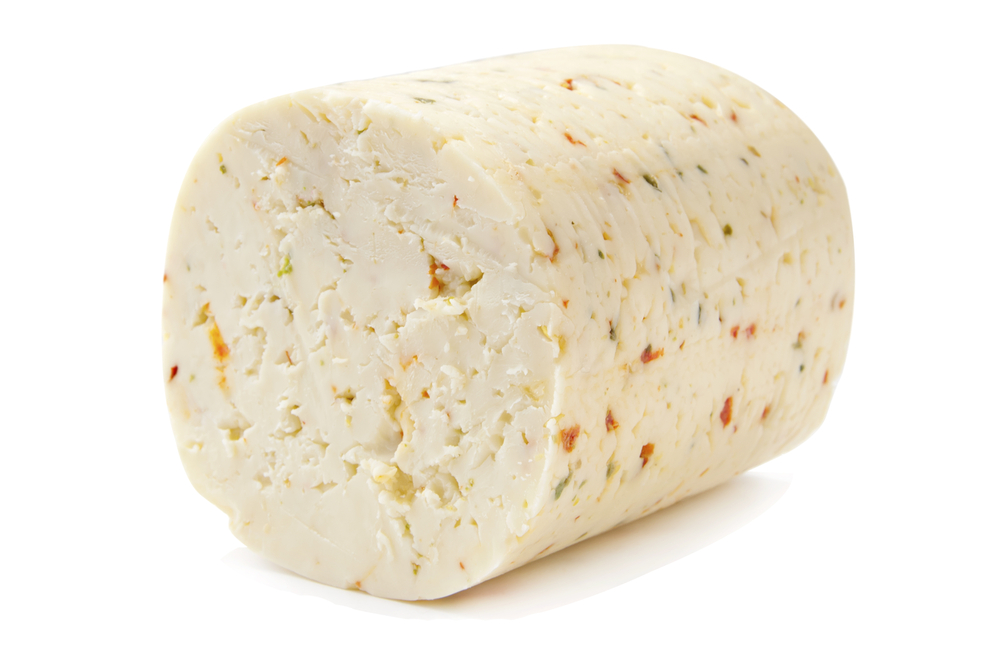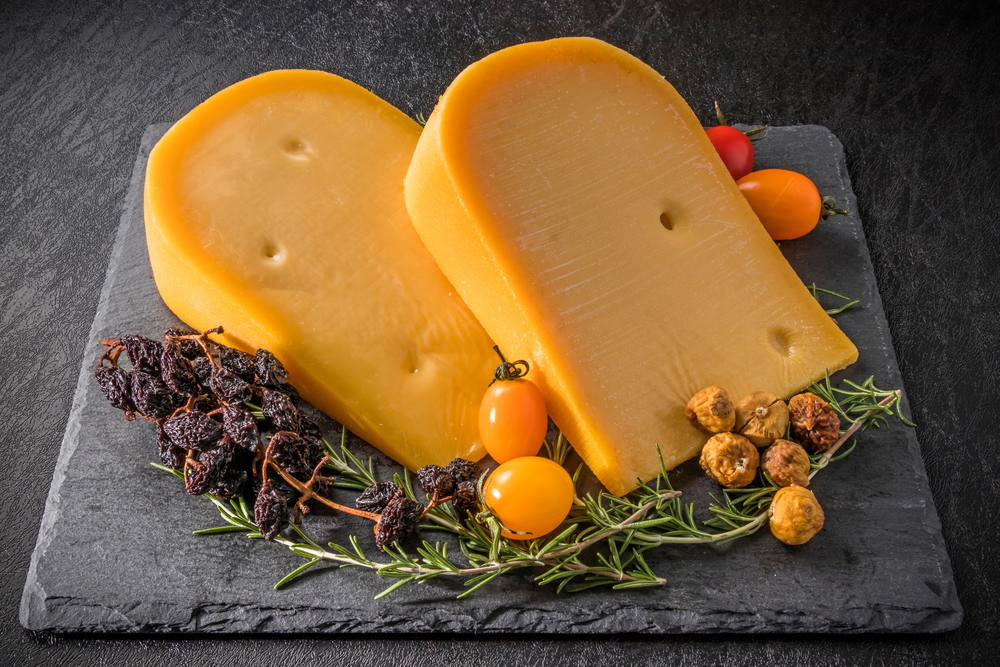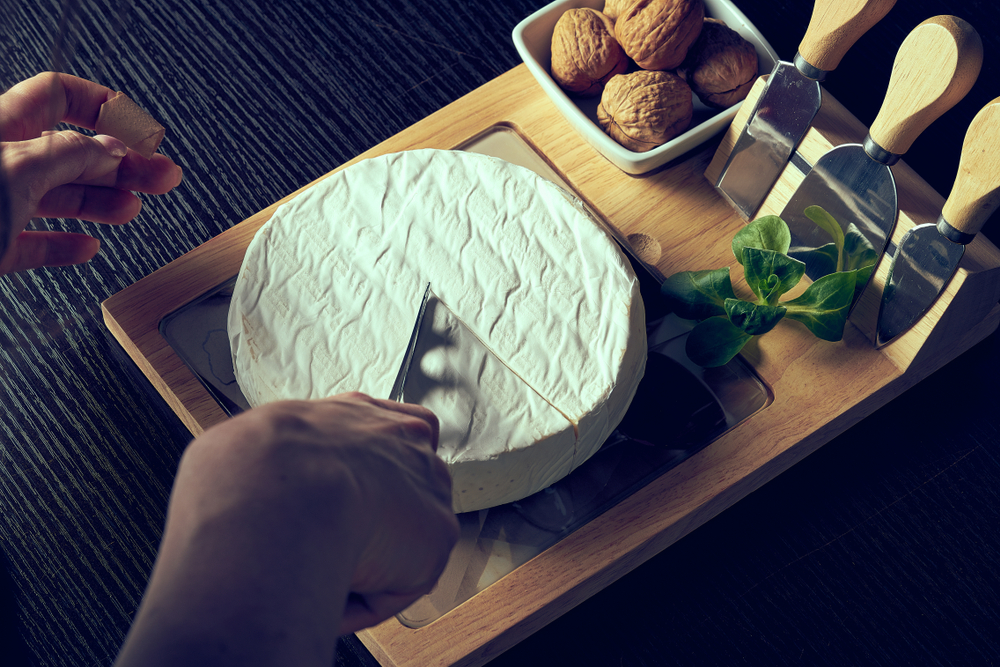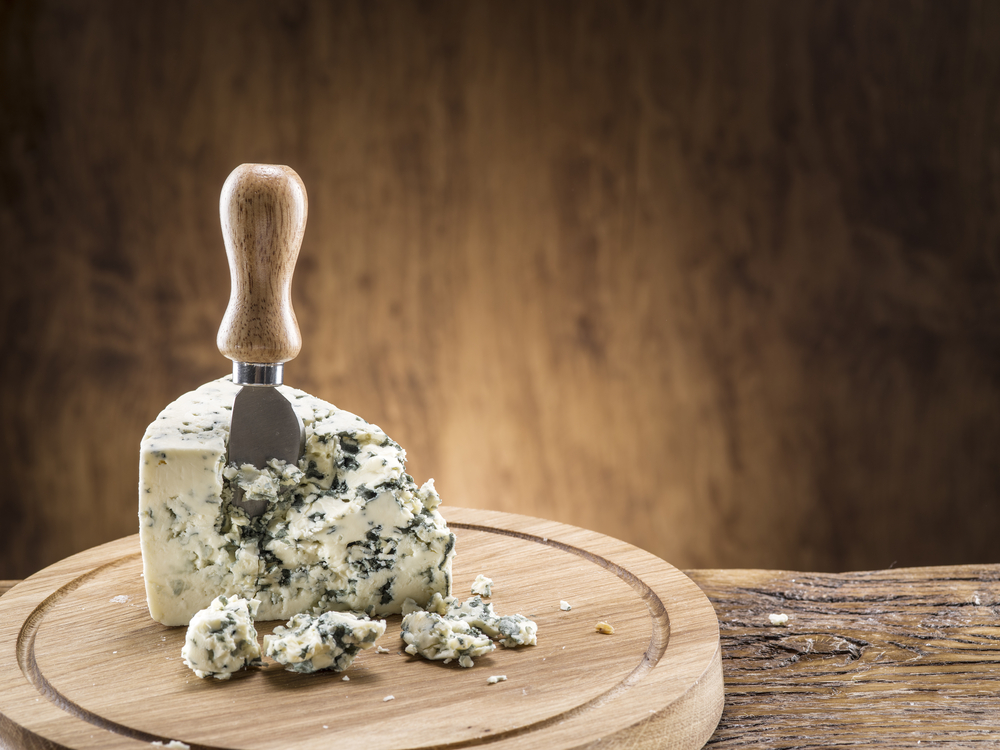As a cheese lover, I have often wondered about the safety of consuming different types of cheeses. One cheese that I have been curious about is Havarti cheese.
Specifically, I have wondered whether Havarti cheese is pasteurized or not.

Pairing Havarti Cheese
Havarti cheese is a semi-soft cheese that originated in Denmark. It is known for its creamy texture and mild, buttery flavor.
But what sets it apart from other cheeses is its production process. Havarti cheese is made from cow’s milk and is typically aged for three months.
One of the most common concerns about Havarti cheese is whether it is pasteurized or not. Pasteurization is a process that kills bacteria in food by heating it to a specific temperature for a set amount of time.
This process is designed to make food safer to eat and to extend its shelf life. So, is Havarti cheese pasteurized?
What Is Havarti Cheese
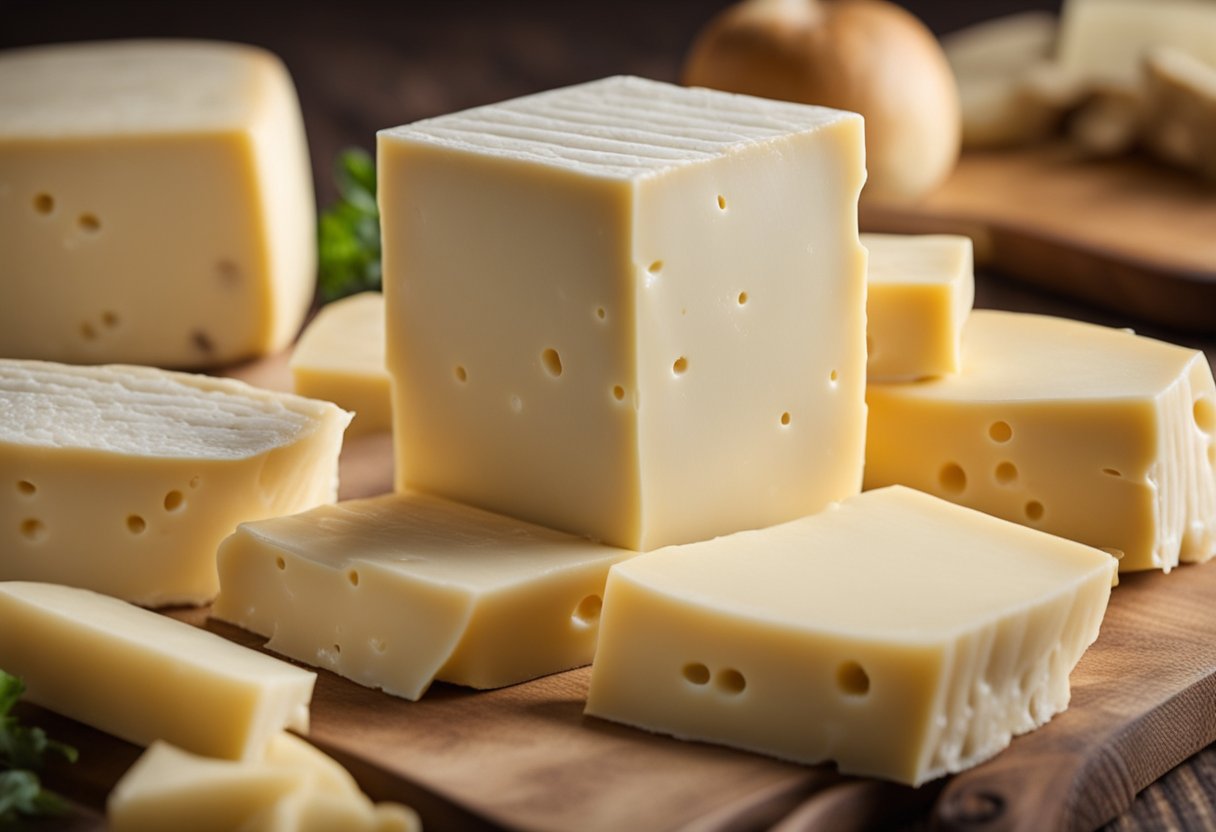
Havarti cheese is a semi-soft cow’s milk cheese that originated in Denmark. It is named after the farm where it was first created, Havarthigaard, which is located near Copenhagen.
Havarti cheese is known for its mild, buttery flavor and creamy texture. It is a versatile cheese that can be used in a variety of dishes, including sandwiches, salads, and casseroles.
Havarti cheese is made by introducing rennet to milk to cause curdling. The curds are then pressed into cheese molds and drained.
The cheese is then aged for several months, during which time it develops its distinctive flavor and texture.
One of the unique characteristics of Havarti cheese is that it can come in a variety of flavors. Some popular variations include dill-infused Havarti, horseradish Havarti, and jalapeño Havarti.
These variations are achieved by adding herbs, spices, or peppers to the cheese during the cheese-making process.
It is worth noting that Havarti cheese is a pasteurized cheese, meaning it has gone through a process that kills off any harmful bacteria.
This makes it safe to eat and also allows it to be stored for longer periods of time. However, it is important to note that not all Havarti cheese is created equal.
Some brands may use different methods or ingredients, so it is always a good idea to check the label to ensure that the cheese is pasteurized.
Overall, Havarti cheese is a delicious and versatile cheese that can be enjoyed on its own or used in a variety of dishes.
Its mild flavor and creamy texture make it a popular choice for those who may not be fans of stronger, more pungent cheeses.
Origins of Havarti Cheese
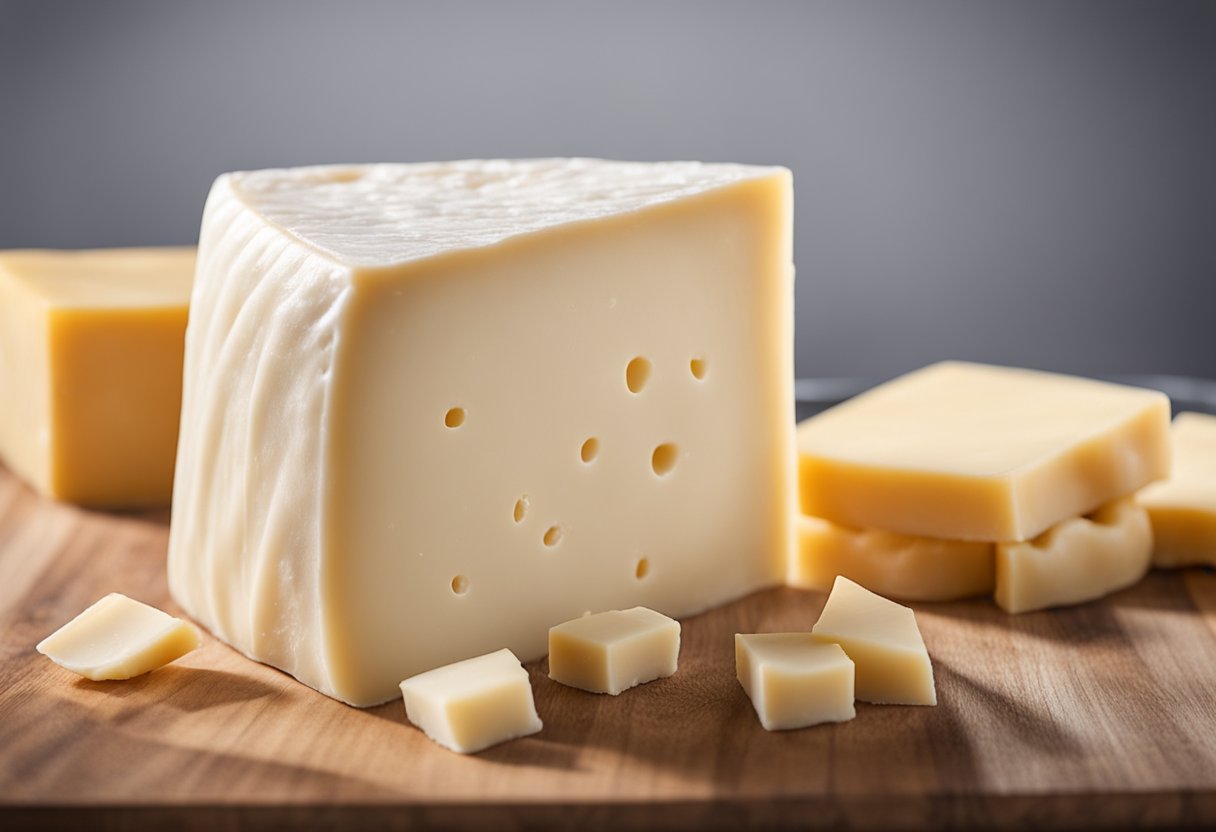
Havarti cheese is a semi-soft Danish cheese that is popular all over the world. The cheese was first created by Hanne Nielsen, who operated an experimental farm called Havarthigaard, in Øverød, north of Copenhagen, in the mid-19th century.
The cheese was named after the farm where it was first created, giving it a rich historical background that adds to its uniqueness.
Havarti cheese is made like most cheeses, by introducing rennet to milk to cause curdling. The curds are pressed into cheese molds which are drained, and then the cheese is aged.
While the original Havarti cheese is different from flødehavarti (“cream Havarti”), which is made from high-pasteurized milk, so that the whey proteins that would otherwise be eliminated during production remain in the curd. This raises yields, but alters the taste and texture.
Today, Havarti cheese is produced all over the world, including in the United States, where it is made using traditional methods.
Wisconsin is one of the top producers of Havarti cheese in the United States, thanks to the state’s rich dairy farming history and expertise in cheese making.
Overall, Havarti cheese has a rich history and continues to be a popular cheese around the world.
The Making Process of Havarti Cheese
I have always wondered how Havarti cheese is made and if it is pasteurized. After doing some research, I have found out that Havarti cheese is made like most cheeses by introducing rennet to milk to cause curdling.
The curds are separated from the whey, drained, and then pressed into cheese molds.
The process starts with fresh milk, which is heated and mixed with cream. The mixture is then cooled down to a specific temperature, and mold and rennet are added.
The mold is responsible for the cheese’s distinctive flavor, while the rennet is used to separate the curds from the whey.
Once the curdling process is complete, the curds are separated from the whey and placed into cheese molds. The cheese is then pressed to remove any remaining whey and to give it its characteristic shape.
After the cheese is molded, it is then aged for a few months to years, depending on the desired flavor and texture.
During the aging process, the cheese is stored in a temperature and humidity-controlled environment.
Havarti cheese can be made with or without a rind. Rindless Havarti is more common and has a mild and buttery flavor.
However, traditional Havarti is a smear-rind cheese, which means that it is coated with bacteria during the aging process to promote ripening and flavor development.
In conclusion, Havarti cheese is made using a similar process to most cheeses. It involves the use of mold, rennet, curds, and whey.
The cheese is then molded, pressed, and aged for a few months to years. Whether or not Havarti cheese is pasteurized depends on the manufacturer.
Characteristics of Havarti Cheese

Havarti cheese is a semi-soft Danish cow’s milk cheese that is known for its creamy texture and mild flavor. It has a buttery and sweet taste with a hint of fruit and spice aroma.
The cheese is typically aged for around three months, which gives it a slightly tangy flavor.
One of the defining characteristics of Havarti cheese is its texture. It has a creamy and smooth texture, which makes it perfect for melting.
The cheese is also known for its small, irregular eyes that are scattered throughout the cheese. These eyes give the cheese a unique appearance and texture.
Havarti cheese is typically a pale yellow color, although some varieties may have a slightly darker hue.
The cheese is often sold in blocks or slices, and it can be enjoyed on its own or used in a variety of dishes.
Overall, Havarti cheese is a versatile cheese that can be used in a wide range of recipes.
Its mild flavor and creamy texture make it a popular choice for cooking, while its unique aroma and eye-catching appearance make it a favorite among cheese lovers.
Varieties of Havarti Cheese
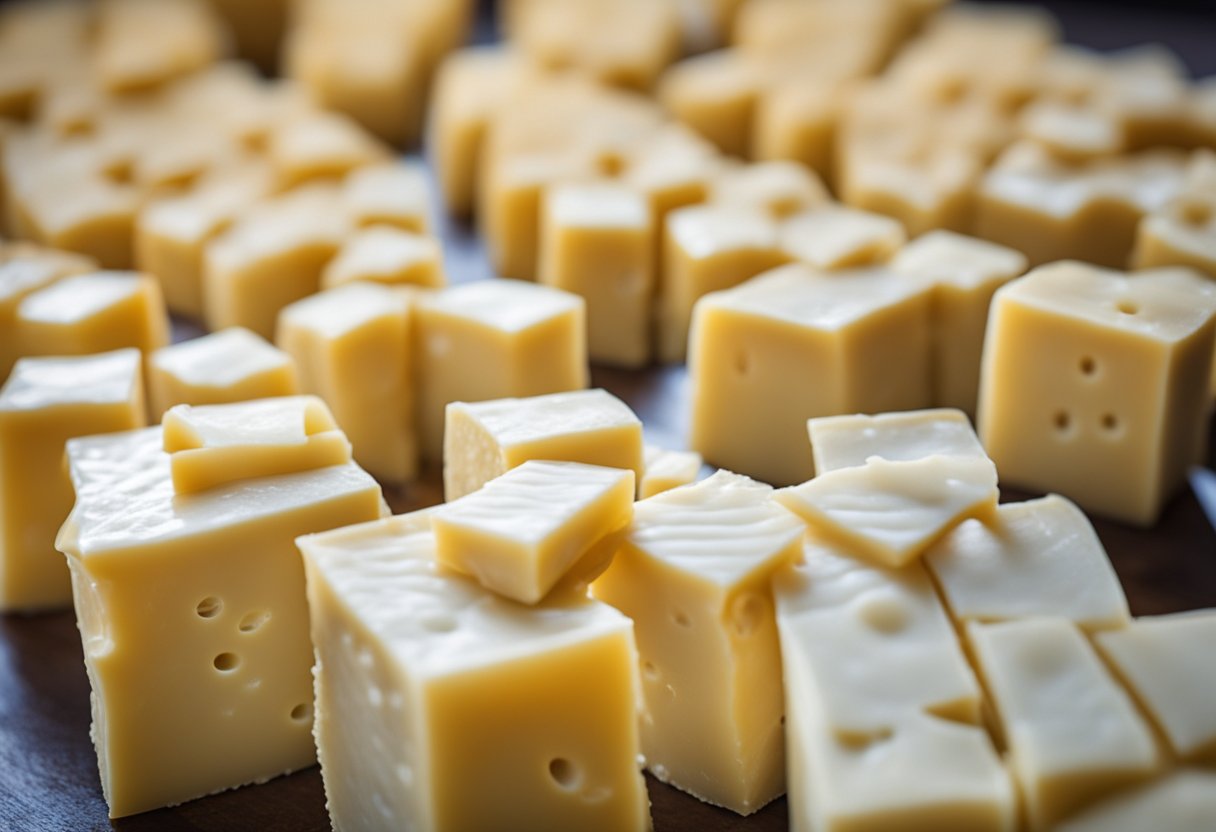
I have found that there are many varieties of Havarti cheese available in the market. Some of the most popular ones include:
- Cream Havarti: This type of Havarti cheese is made from high-pasteurized milk, which allows the whey proteins to remain in the curd, resulting in a creamier texture and milder taste.
- Dill Havarti: Dill-infused Havarti cheese is a popular variety that adds a Mediterranean-inspired flavor to any dish. The dill adds a subtle tangy flavor that pairs well with crackers and bread.
- Caraway Havarti: Caraway seeds are added to the cheese during the production process, giving it a unique flavor. This variety of Havarti cheese is perfect for sandwiches and pairs well with dark bread.
- Cheddar Havarti: Cheddar Havarti cheese is a blend of two popular cheeses that results in a creamy, tangy flavor. This type of Havarti cheese is perfect for melting and is commonly used in grilled cheese sandwiches.
- Horseradish Havarti: Horseradish-infused Havarti cheese is a popular variety that adds a spicy kick to any dish. The horseradish adds a bold flavor that pairs well with roast beef and other meats.
- Flødehavarti: Flødehavarti, also known as “cream Havarti,” is a Danish cheese that is made from high-pasteurized milk. This type of Havarti cheese has a creamy texture and mild taste, making it a popular choice for sandwiches and cheese boards.
Overall, Havarti cheese is a versatile cheese that can be used in a variety of dishes. Its mild taste and creamy texture make it a popular choice for sandwiches, cheese boards, and as a melting cheese.
With so many varieties available, there is a Havarti cheese for everyone’s taste preferences.
Is Havarti Cheese Pasteurized
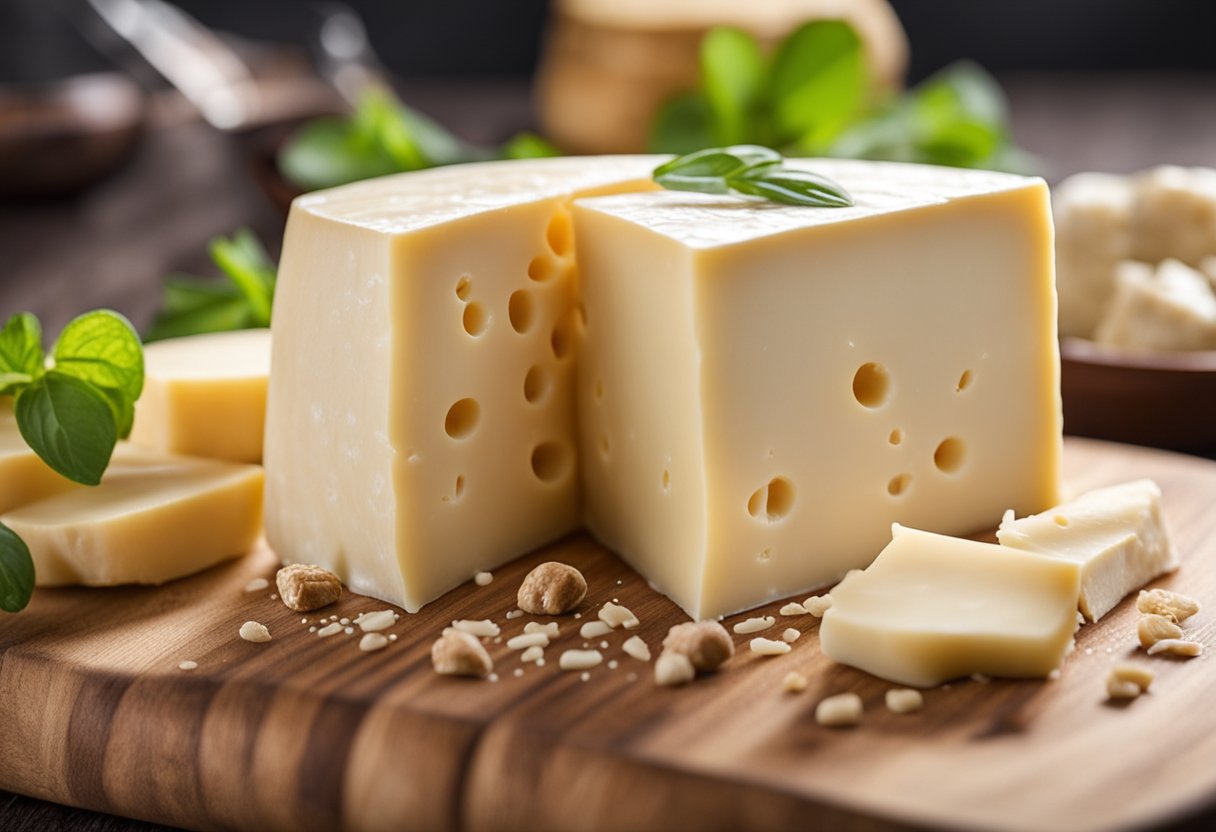
I have researched extensively to answer the question: Is Havarti Cheese Pasteurized? The answer is yes, Havarti cheese is pasteurized.
Havarti cheese is made from cow’s milk and undergoes the process of pasteurization to eliminate any harmful bacteria.
Pasteurization is a process of heating milk to a specific temperature for a specific period of time to kill harmful bacteria.
The process was first developed by Louis Pasteur in the 19th century and is now widely used to make milk and dairy products safe for human consumption.
The process of pasteurization does not significantly affect the taste or texture of Havarti cheese.
Havarti is a semi-soft Danish cheese that has a buttery taste and a creamy texture. It is one of the most popular cheese varieties in the world and is widely used in cooking and as a snack.
It is important to note that not all cheeses are pasteurized. Some cheeses, such as raw milk cheeses, are made from unpasteurized milk and may contain harmful bacteria such as Listeria, E. coli, and Salmonella.
These bacteria can cause serious illness, especially in young children, pregnant women, and people with weakened immune systems.
In conclusion, Havarti cheese is pasteurized, which makes it safe for consumption. Pasteurization is an important process that helps to ensure the safety of milk and dairy products.
If you are unsure whether a cheese is pasteurized or not, it is always best to check the label or ask the cheesemaker.
Nutritional Content of Havarti Cheese
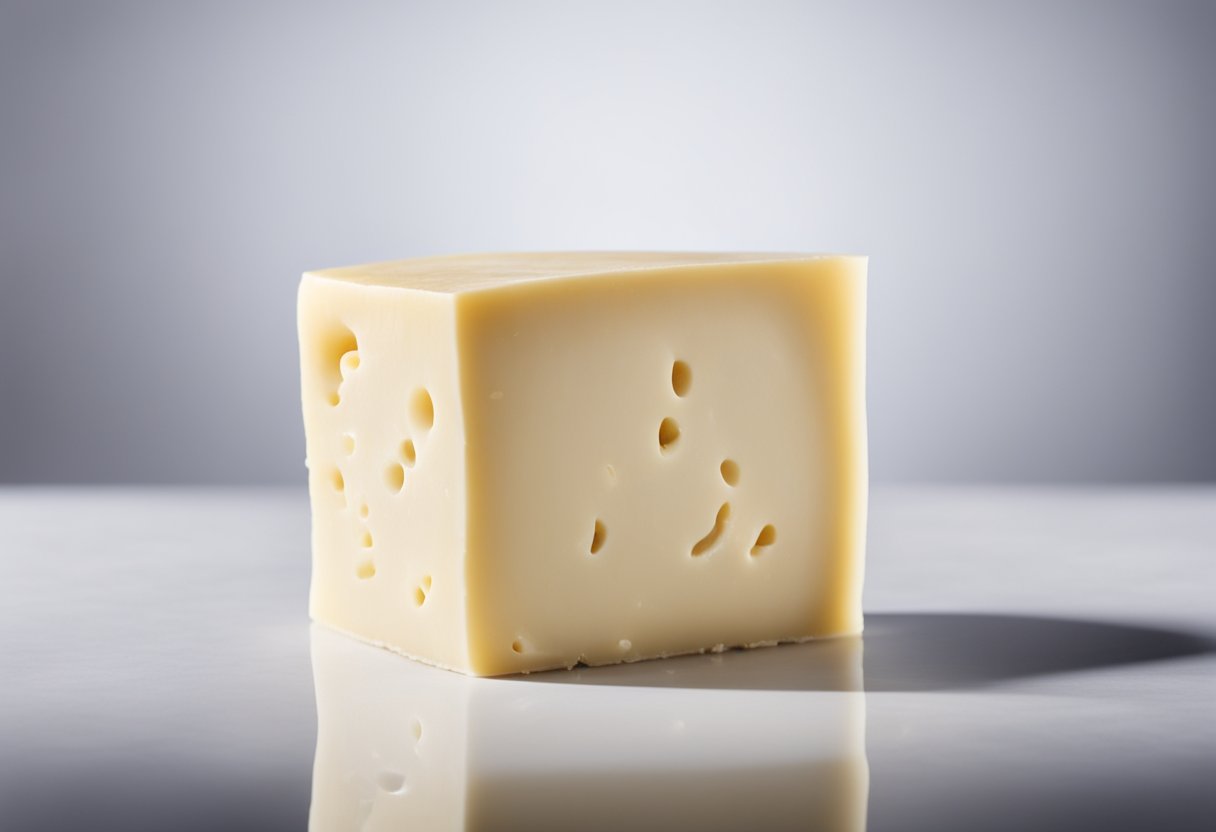
As a cheese lover, I always want to know the nutritional content of the cheese I consume.
If you’re wondering about the nutritional value of Havarti cheese, then you’re in the right place. In this section, I will discuss the nutritional content of Havarti cheese.
Protein Content
Havarti cheese is a good source of protein. One slice of Havarti cheese (1 oz) contains approximately 6.7 grams of protein.
Protein is essential for building and repairing tissues in the body. It also helps to keep you feeling full and satisfied.
Fat Content
Havarti cheese is a high-fat cheese. One slice of Havarti cheese (1 oz) contains approximately 8.4 grams of fat. Most of the fat in Havarti cheese is saturated fat, which can increase your risk of heart disease if consumed in excess.
It’s important to consume Havarti cheese in moderation as part of a balanced diet.
Nutrition
Havarti cheese is a good source of calcium, phosphorus, and vitamin B12. One slice of Havarti cheese (1 oz) contains approximately 20% of the daily recommended intake of calcium, 10% of the daily recommended intake of phosphorus, and 15% of the daily recommended intake of vitamin B12.
These nutrients are essential for maintaining strong bones, teeth, and a healthy nervous system.
Salt Content
Havarti cheese is a salty cheese. One slice of Havarti cheese (1 oz) contains approximately 159mg of sodium. Consuming too much sodium can increase your risk of high blood pressure, which can lead to heart disease and stroke.
It’s important to consume Havarti cheese in moderation as part of a balanced diet.
In conclusion, Havarti cheese is a delicious cheese that is enjoyed by many. It’s important to consume it in moderation as part of a balanced diet due to its high-fat and salt content.
However, it’s also a good source of protein, calcium, phosphorus, and vitamin B12, making it a nutritious addition to your diet when consumed in moderation.
Pairing Havarti Cheese
When it comes to pairing Havarti cheese, you have a lot of options. This mild and buttery cheese pairs well with a variety of drinks, including beer, wine, and even non-alcoholic beverages.
In this section, I will share some of my favorite pairings for Havarti cheese.
Beer
Havarti cheese pairs well with a variety of beers, but I recommend trying it with a weiss beer, doppelbock, stout, or ESB.
The light and fruity flavors of a weiss beer complement the mild and creamy taste of Havarti cheese. A doppelbock, with its rich and malty flavor, provides a nice contrast to the buttery taste of Havarti.
A stout or ESB, on the other hand, brings out the nutty and earthy flavors in Havarti cheese.
Wine
Havarti cheese is also a great pairing for wine. For a red wine, try Havarti with a Beaujolais, Cabernet Sauvignon, or Pinot Noir.
The light and fruity flavors of a Beaujolais complement the mild and creamy taste of Havarti cheese. A Cabernet Sauvignon or Pinot Noir, with their bold and complex flavors, provide a nice contrast to the buttery taste of Havarti.
For a white wine, try Havarti with a Sauvignon Blanc, Riesling, or Zinfandel. The crisp and acidic flavors of a Sauvignon Blanc complement the mild and creamy taste of Havarti cheese.
A Riesling or Zinfandel, with their sweet and fruity flavors, provide a nice contrast to the buttery taste of Havarti.
Non-Alcoholic Beverages
If you prefer non-alcoholic beverages, Havarti cheese pairs well with a variety of options. Try it with sparkling water or soda, which can help cleanse your palate between bites of cheese.
You can also pair Havarti with apple or pear juice, which provides a nice contrast to the mild and buttery taste of the cheese.
In conclusion, Havarti cheese is a versatile cheese that pairs well with a variety of drinks, including beer, wine, and non-alcoholic beverages.
With so many options to choose from, you’re sure to find the perfect pairing for your next cheese plate.
Culinary Uses of Havarti Cheese

Havarti cheese is a versatile cheese that can be used in a variety of culinary applications. Here are some of the ways I enjoy using Havarti cheese in my cooking:
- Sandwiches: Havarti cheese is a great addition to any sandwich. It pairs well with meats like turkey and ham, as well as with vegetables like lettuce and tomato. Havarti cheese can also be used in grilled sandwiches, such as a grilled cheese sandwich.
- Crackers: Havarti cheese is a great cheese to serve with crackers. Its mild flavor pairs well with a variety of crackers, including plain, wheat, and herb-flavored crackers.
- Melted: Havarti cheese melts well, making it a great cheese to use in dishes like casseroles and cheese sauces. It can also be melted on top of vegetables and meats.
- Sliced: Havarti cheese can be sliced and served on a cheese board alongside other cheeses like brie, mozzarella, and Swiss cheese. It pairs well with fruits like apples and pears, as well as with bread and crackers.
- Spices: Havarti cheese can be flavored with spices like caraway seeds and honey to add extra flavor to dishes.
- Recipes: Havarti cheese can be used in a variety of recipes, including salads, pizzas, and casseroles.
- Colby and Monterey Jack: Havarti cheese is similar in flavor and texture to cheeses like Colby and Monterey Jack, making it a great substitute in recipes that call for those cheeses.
- American Cheese: Havarti cheese can also be used as a substitute for American cheese in dishes like grilled cheese sandwiches.
Overall, Havarti cheese is a versatile cheese that can be used in a variety of culinary applications. Its mild flavor and ability to melt make it a great addition to many dishes.
Storing Havarti Cheese
As with any cheese, proper storage is crucial to maintain its freshness and flavor. Havarti cheese is a semi-soft cheese that should be stored differently than hard cheeses like cheddar or soft cheeses like cottage cheese.
Here are some tips for storing Havarti cheese:
- Refrigerate immediately: If you’re not planning on using the cheese right away, put it in the refrigerator as soon as possible to keep it fresh.
- Use a cheese paper: If you’re storing small portions of Havarti cheese, consider using a cheese paper. This will help prevent the cheese from drying out and keep it fresh for longer.
- Wrap in plastic wrap: If you don’t have cheese paper, wrap the Havarti cheese in plastic wrap. This will help keep moisture in and prevent the cheese from drying out.
- Store in a cheese container: If you have a cheese container, use it to store the Havarti cheese. This will help regulate the humidity and temperature, which are both important for maintaining the cheese’s quality.
- Keep away from strong odors: Havarti cheese can absorb strong odors from other foods in the refrigerator, so it’s best to store it away from strong-smelling foods like onions or garlic.
Remember that Havarti cheese, like all cheeses, has a limited shelf life. It should be consumed within two to three weeks of opening, and it’s important to check for signs of spoilage before consuming.
If the cheese has mold or an off smell, it should be discarded.
Overall, storing Havarti cheese is relatively simple as long as you follow these tips. With proper storage, you can enjoy the delicious taste of Havarti cheese for weeks to come.
Frequently Asked Questions
Where can I buy pasteurized Havarti cheese?
You can buy pasteurized Havarti cheese at most grocery stores and supermarkets. Look for the words “pasteurized” or “made with pasteurized milk” on the label to ensure that the cheese is safe to eat.
What are some similar cheeses to Havarti?
Some similar cheeses to Havarti include Gouda, Edam, and Fontina. These cheeses are also semi-soft and have a mild, nutty flavor.
Is Havarti cheese considered processed?
Havarti cheese is not considered a processed cheese. It is made from natural ingredients, including cow’s milk, rennet, and cheese culture. However, some flavored varieties of Havarti cheese may contain added ingredients.
How does Havarti cheese compare to Gouda?
Havarti cheese and Gouda cheese are similar in texture and flavor. However, Havarti cheese is slightly softer and creamier than Gouda cheese.
What are some safe cheeses to eat during pregnancy?
Some safe cheeses to eat during pregnancy include pasteurized hard cheeses, such as Cheddar, Swiss, and Parmesan, as well as pasteurized soft cheeses, such as Brie, Camembert, and cream cheese.
Avoid unpasteurized cheeses, as they may contain harmful bacteria.
Are there any cheeses that are always pasteurized?
Most cheeses in the United States are made with pasteurized milk, including Cheddar, Swiss, and Parmesan. However, some specialty cheeses, such as feta, blue cheese, and some goat cheeses, may be made with unpasteurized milk.
Always check the label to ensure that the cheese is safe to eat.


